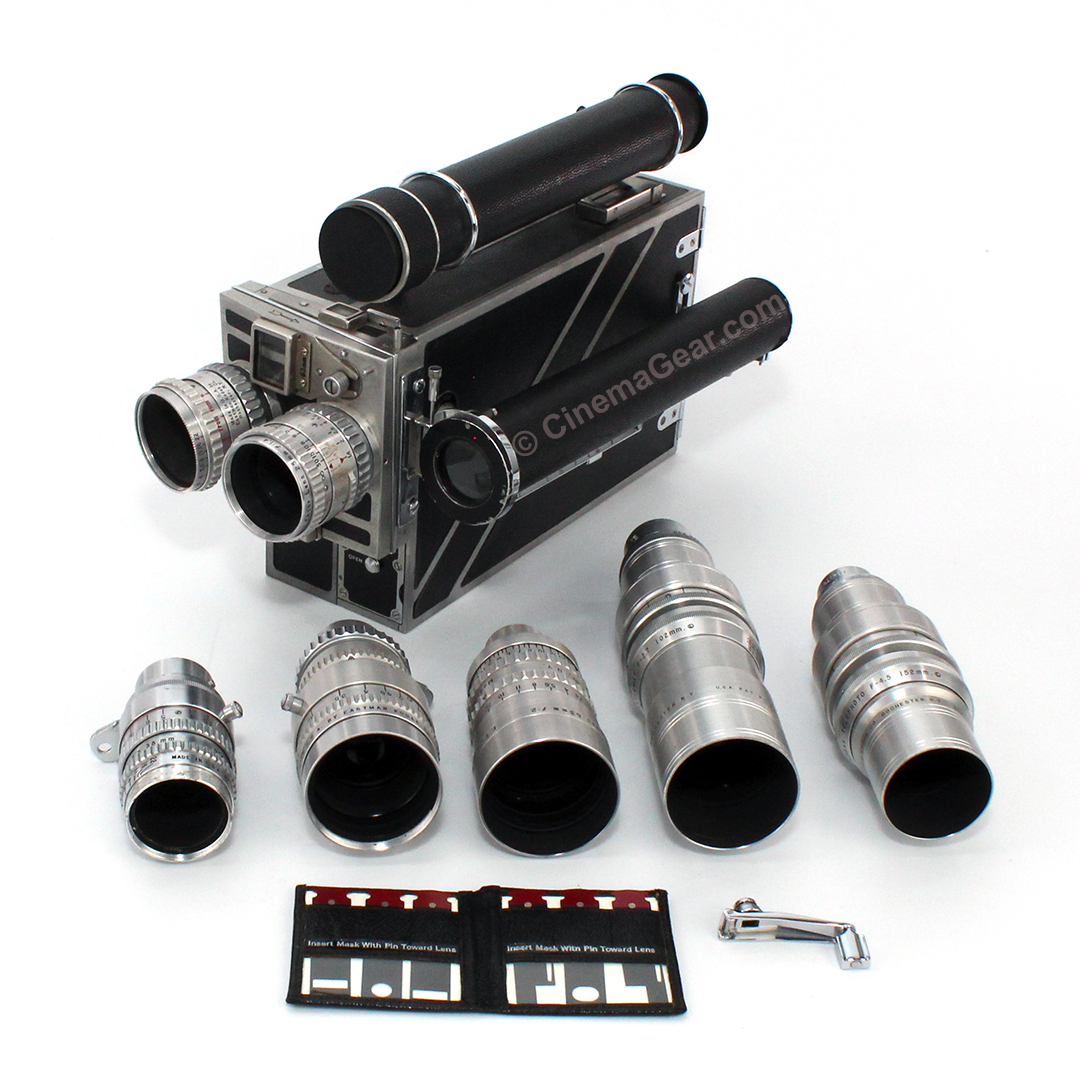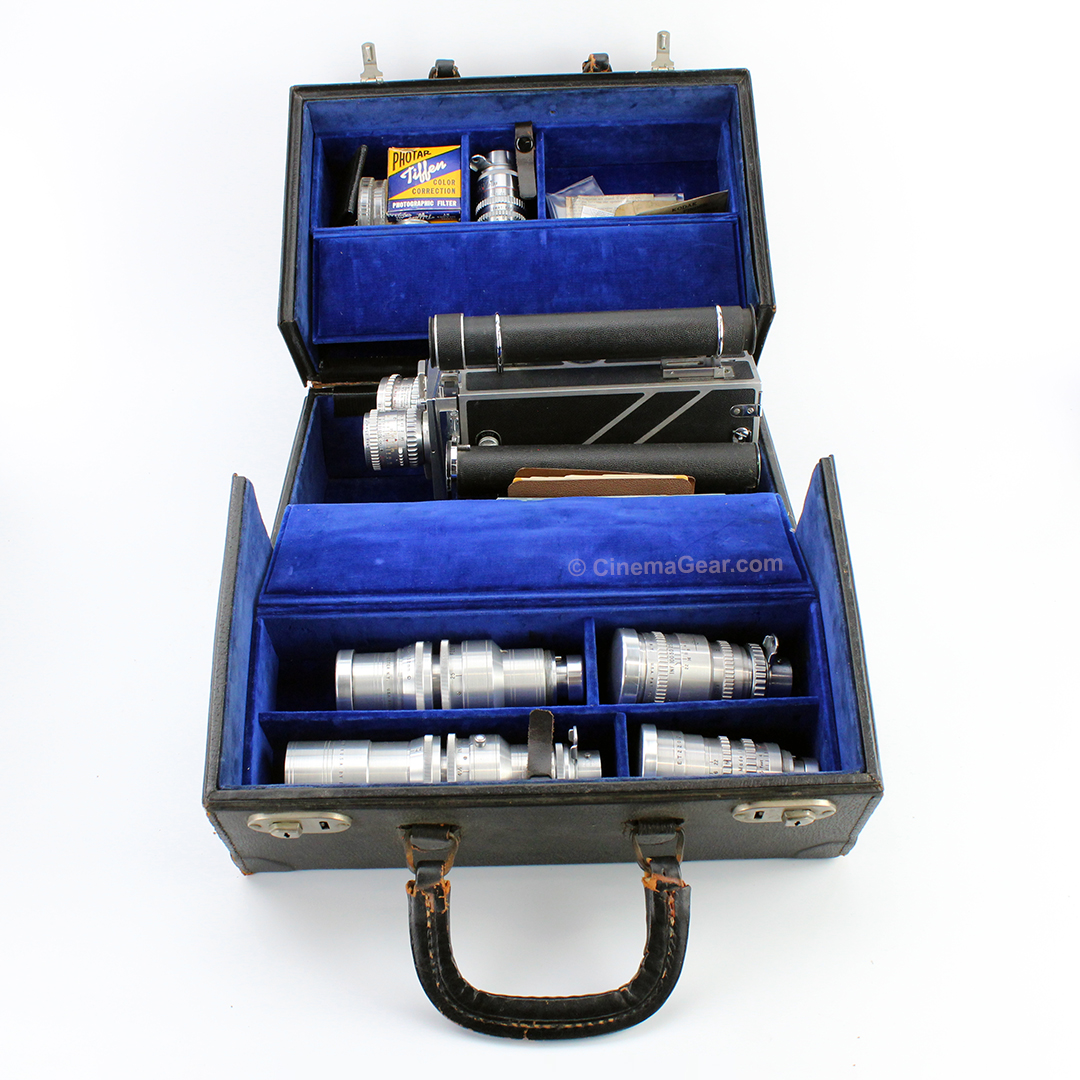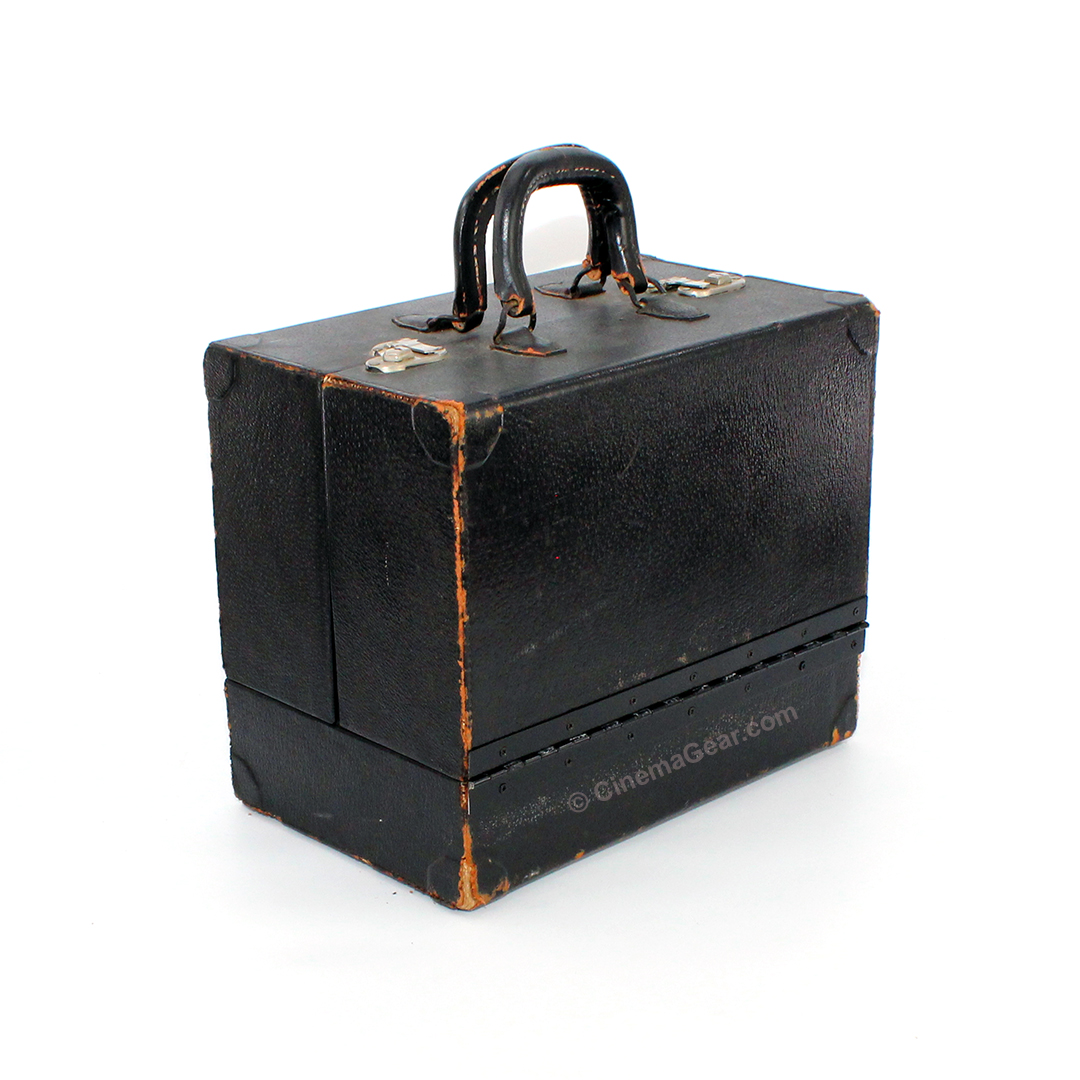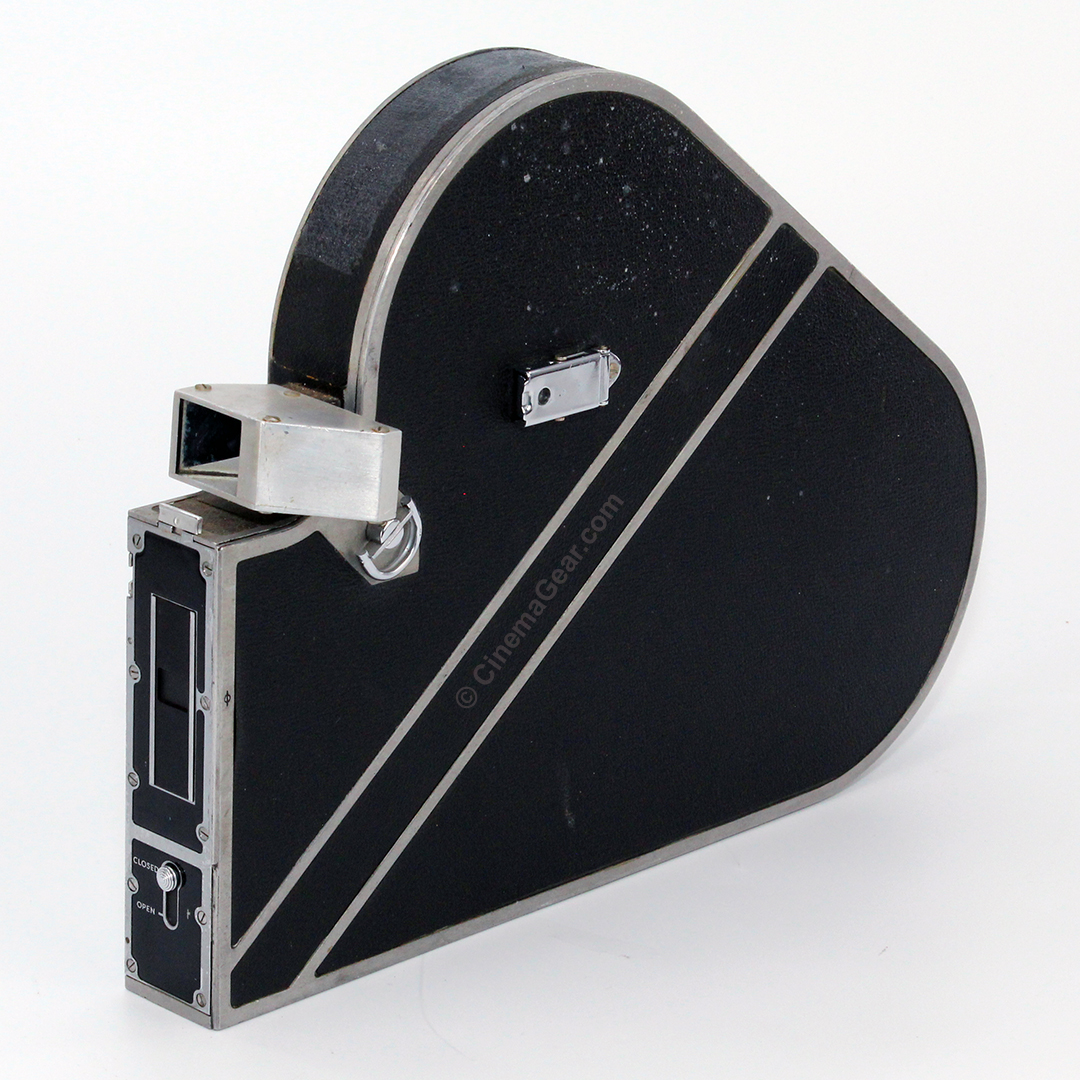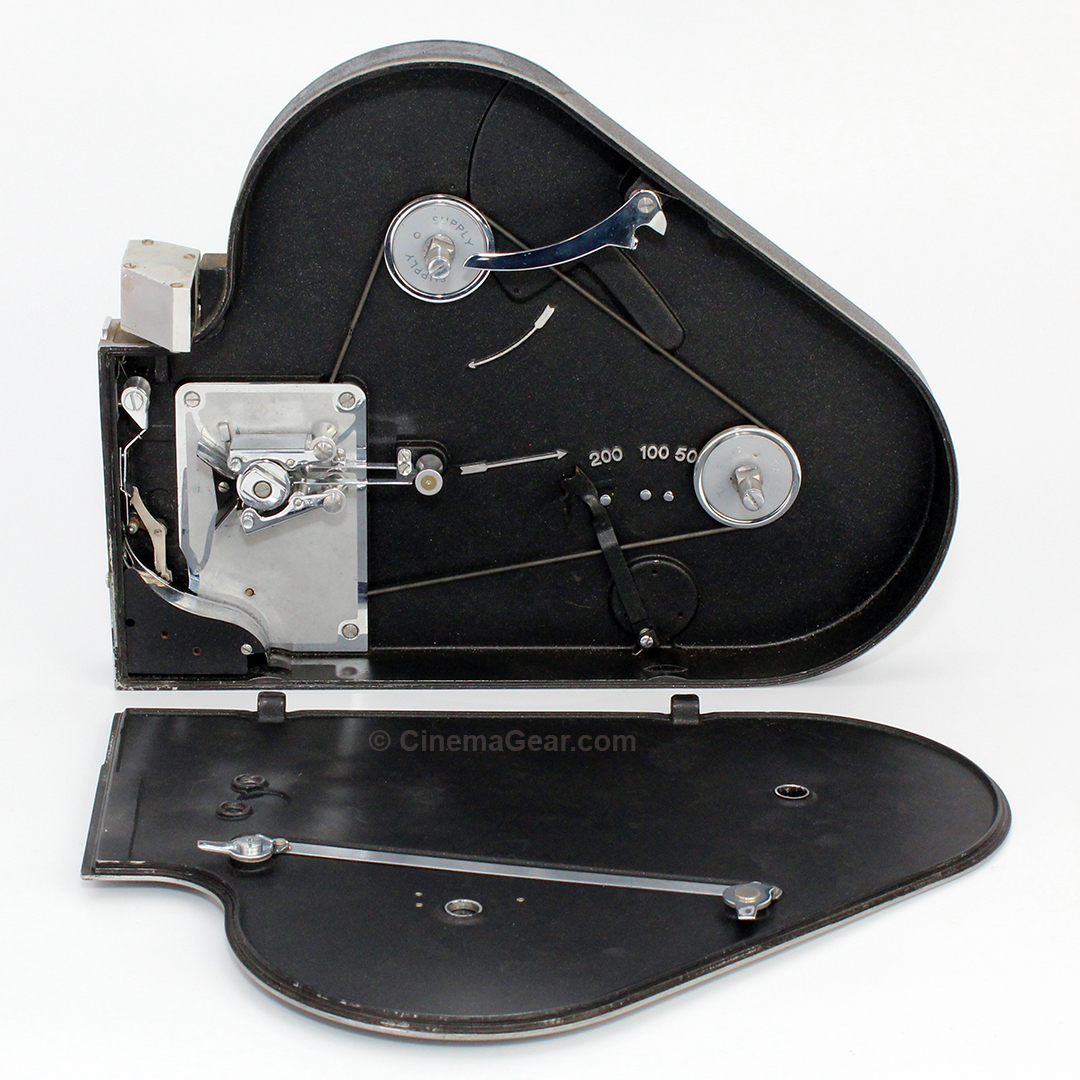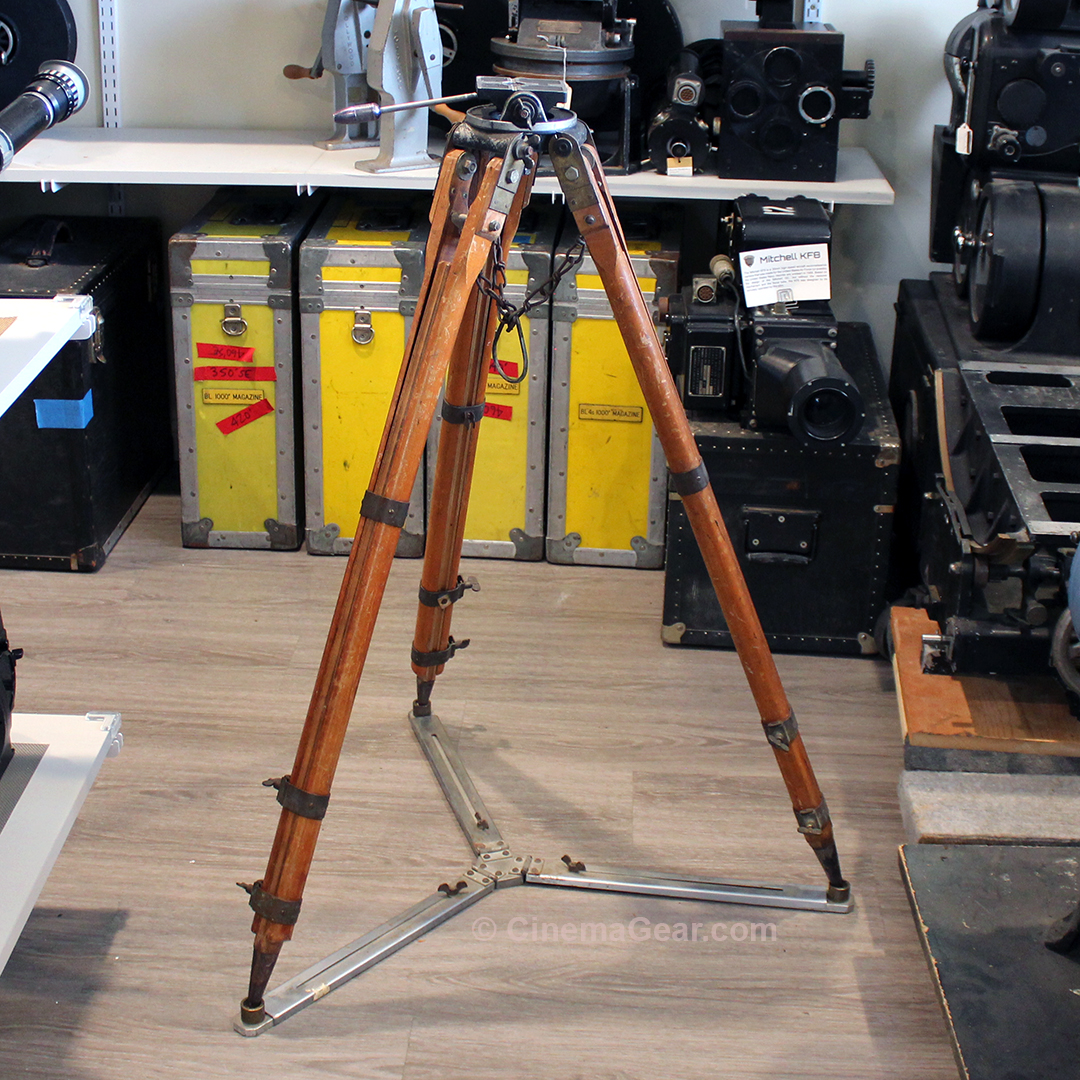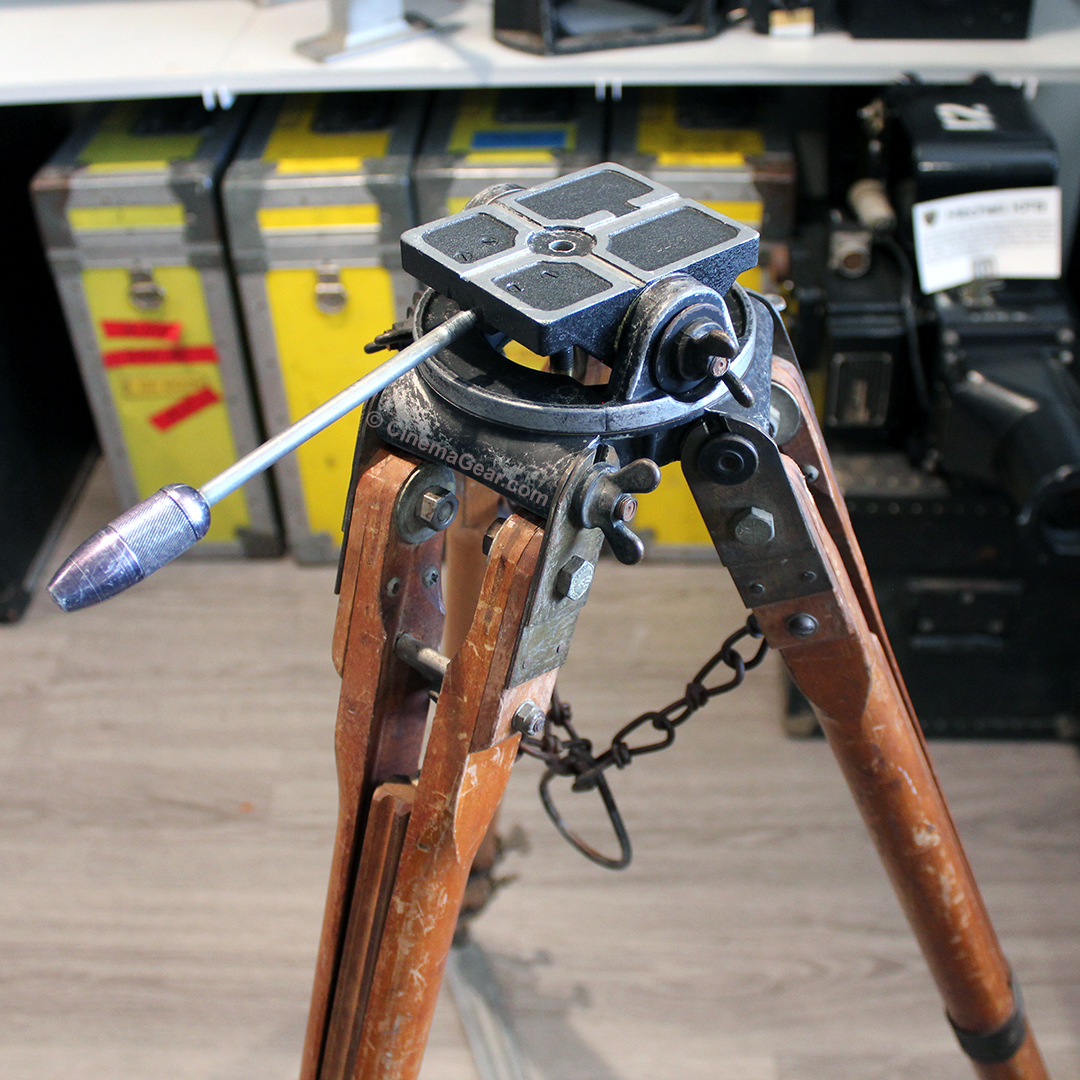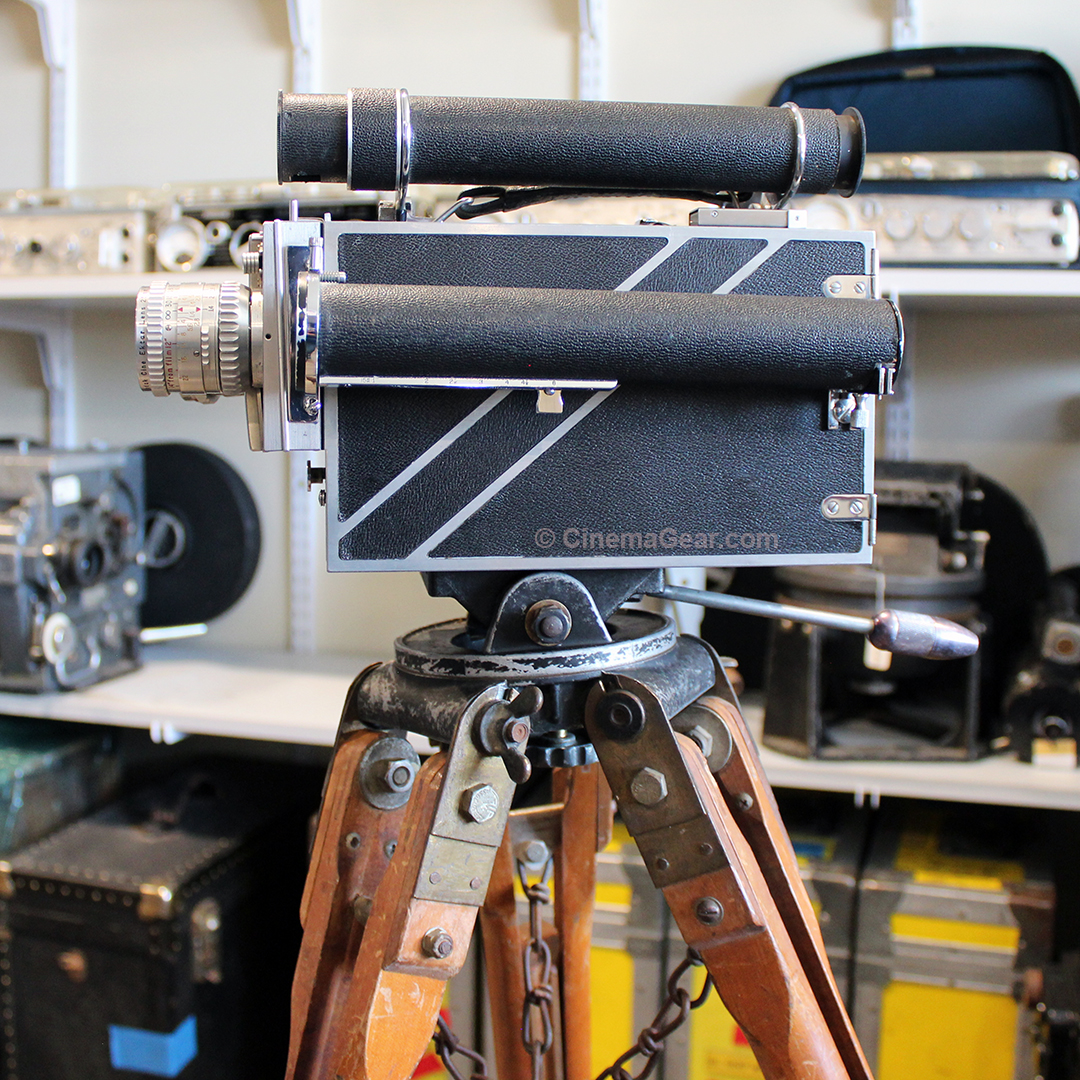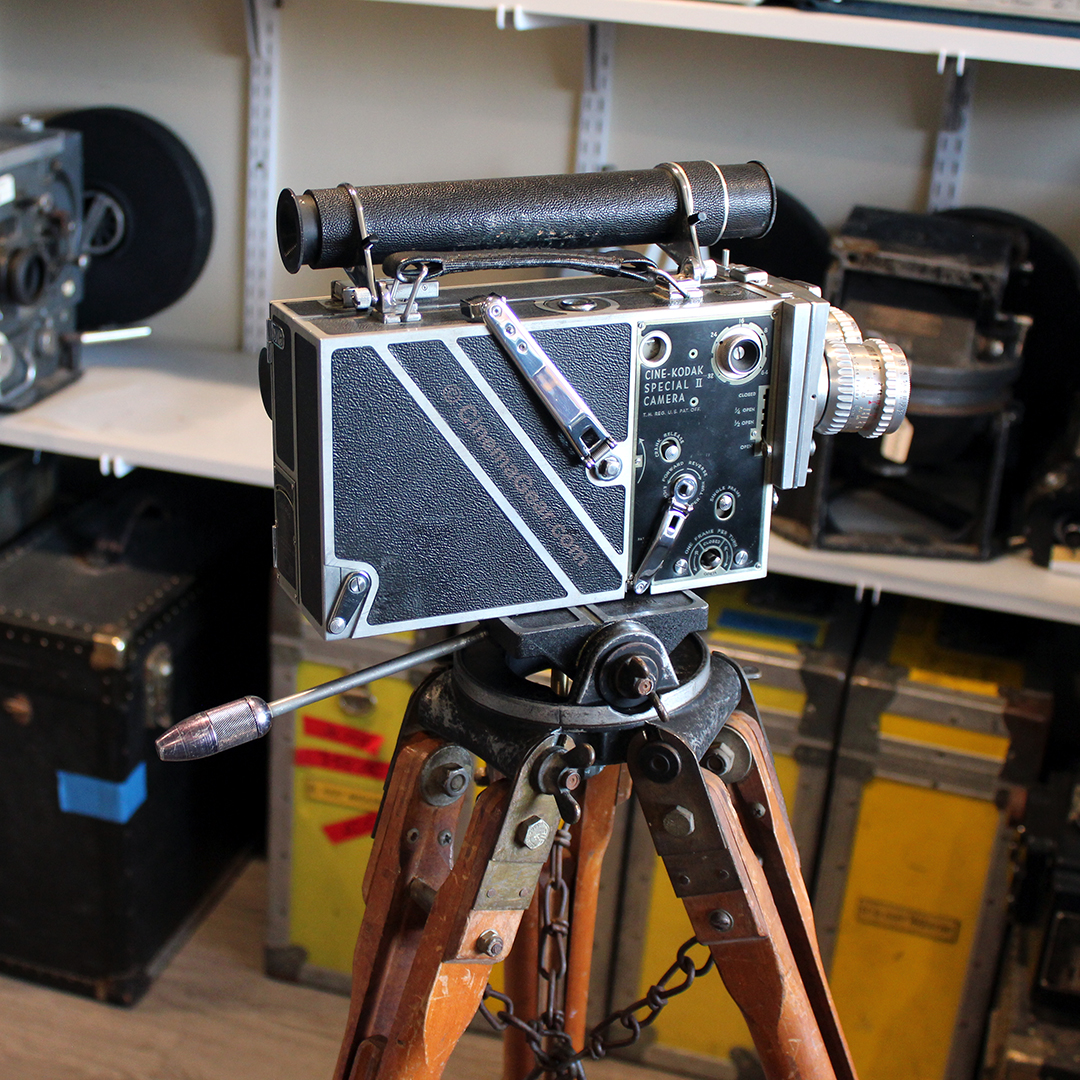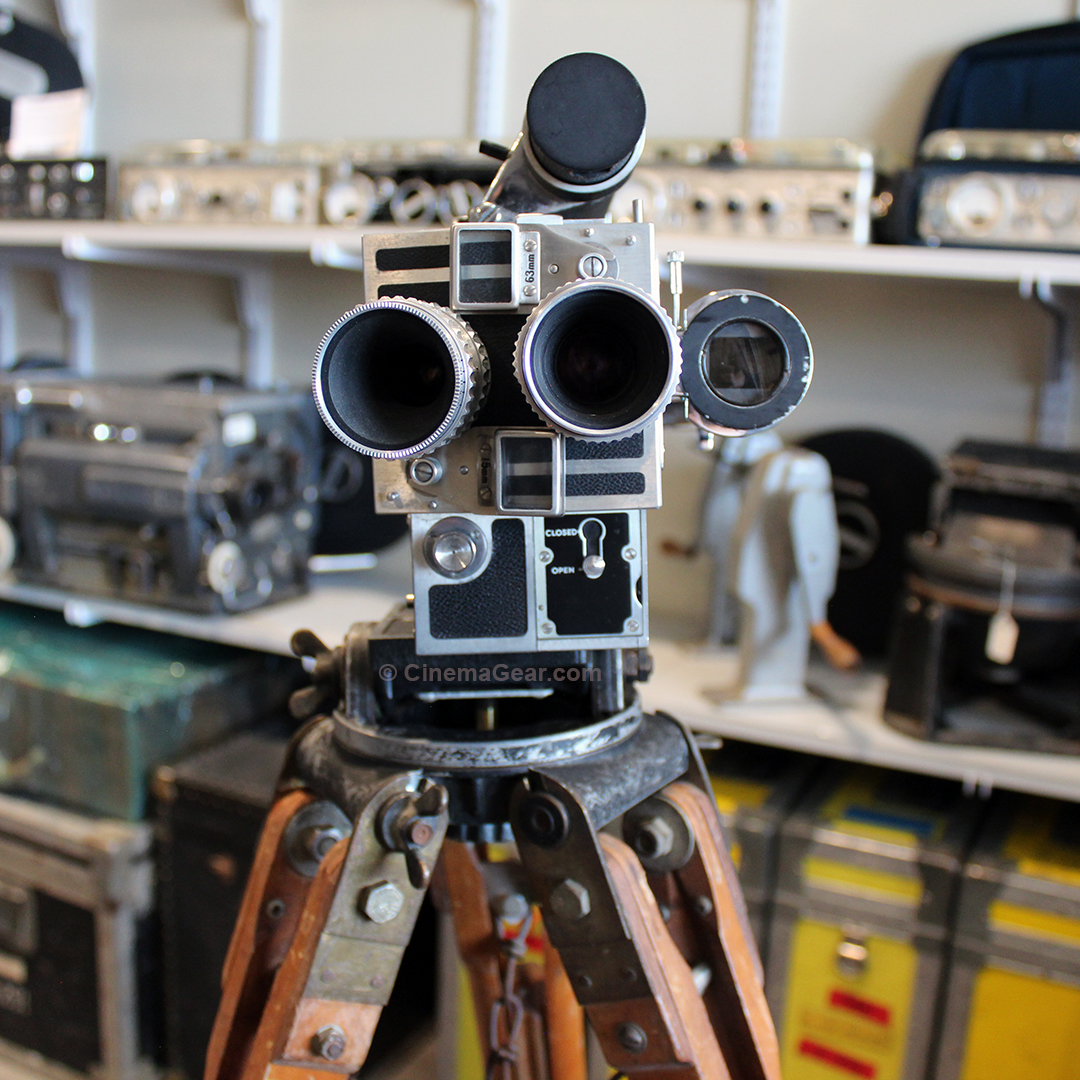
Cine-Kodak Special II Camera with Cine-Kodak Tripod
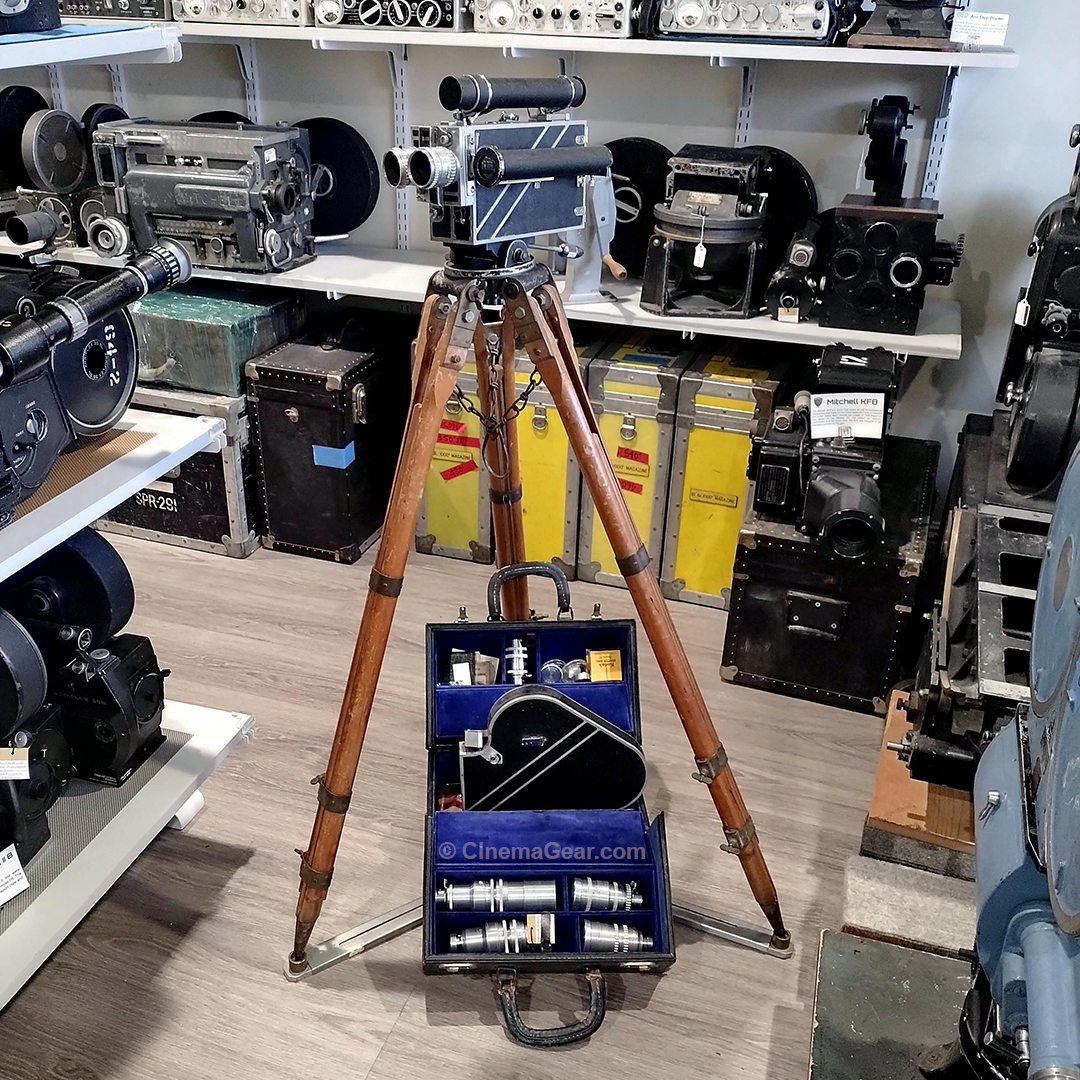
SOLD
Item #C14410
A fellow collector and camera aficionado, John Kwinn, kindly sent me this immaculate Cine-Kodak Special II 16mm camera (ca. 1948) with its original case, a 200’ magazine, and an amazing collection of original lenses and accessories. John asked if I could find a filmmaker or collector who would adopt this camera package and take as good care of it as he did. I went through and serviced the camera and all of its lenses, and found them all to be in truly excellent condition. The case itself required a little tlc, but for the most part, it’s in very nice condition for its age. To complete this camera package, I have added an original Cine-Kodak tripod with pan tilt head that I acquired a couple of years back with a giant crate of other tripods. This is an amazing, museum quality collection of equipment that deserves a really good home. Hopefully one of my followers has a place in your heart and home for this wonderful piece of cinema history.
This 16mm camera package includes:
- Cine-Kodak Special II 16mm camera
- Cine Kodak Ektar 15mm f2.5 lens
- Cine Kodak Ektar 25mm f1.4 lens
- Kodak Anastigmat 38mm f2.5 lens
- Kodak Cine Ektar 63mm f2 lens
- Kodak Anastigmat 102mm f2.7 lens
- Cine Kodak Telephoto 152mm f4.5 lens
- original Kodak camera and accessory case
- original Cine-Kodak tripod
- one 100' magazine
- one 200' magazine
- Kodak parallax compensating viewfinder
- PAR reflex viewfinder
- set of Cine Kodak effects mattes
- Cine Kodak Special II camera brochure with price list (ca. 1952)
- Focusing Finder instructions
- Kodak Cine Photoguide (ca. 1952)
The original Cine-Kodak Special was introduced in 1933 to target the expanding 16mm educational, industrial, commercial, and scientific markets. It used swappable magazines that held 100’ or 200’ of film, and featured a two-position turret with interchangeable lenses. Building on the success of the original Cine-Kodak Special, the Cine-Kodak Special II was introduced in 1948. It featured an improved divergent 2-lens turret that kept the lenses from interfering with each other as they could in the earlier model. The camera used Kodak's new Type-S lens mount, intended to be a universal lens mount for all of Kodak's cine cameras. The Cine-Kodak Special II was one of the most versatile 16mm motion picture cameras of its time. You could shoot standard live action, under cranked or over cranked, and single frame animation, all with one extremely well-made, spring wound camera. This is an excellent camera for beginning filmmakers and veterans alike, as it is feature-packed, durable, and easy to use.
Photo Gallery:
A Brief History of Kodak
George Eastman, founder of the Eastman Kodak Company, was born in Waterville, NY in 1854. At the age of 24, Eastman became interested in photography and the current trend among British photographers of making their own gelatin emulsions. He spent three years experimenting with and perfecting his own gelatin formulas and making dry plates. By 1880, Eastman had patented a machine for mass-producing his gelatin dry plates, which he also began to sell. The success of these dry plates attracted the attention of businessman Harry A. Strong. With the addition of Strong’s financial investment, the two men formed a new company, the Eastman Dry Plate Company, in January 1881. This development allowed Eastman to resign from the bank job he had held since 1874 and focus solely on his new photography business. Eastman continued his work in making photography more portable and convenient for the photographer. To that end, he began experimenting with coating paper with photographic emulsion. In 1883, Eastman introduced roll film using paper as the backing. He continued to adapt and improve his creation, moving away from the paper backing which caused grain to appear in the resulting photos. This led to his revolutionary development of transparent roll film and paved his way to success in the photography business.
In 1884, Eastman, Strong, and about a dozen shareholders formed the Eastman Dry Plate and Film Company to market Eastman’s creation. The Kodak name was trademarked in 1888, and the Eastman Kodak name was adopted in 1892 and incorporated in New York. The first Kodak still camera was released in 1888, and came preloaded with enough film for 100 exposures. The camera sold for $25, and was designed to be returned to Kodak where the film would be developed and prints made. Then the camera was reloaded with film and everything was returned to the customer, all for $10. Camera and film developing costs went down relatively quickly, and by 1900, when the Kodak Brownie was introduced, the camera cost only $1, and $0.15 for a roll of film.
Kodak began marketing specially coated film for motion picture use in 1896. This early film fueled the burgeoning American motion picture industy. Later, in 1923, they introduced 16mm reversal (safety) film on a cellulose acetate base. This development allowed the amateur filmmaking market to flourish and eliminated the dangerous fire risk associated with nitrate film. To go along with their new 16mm safety film, Kodak also launched their first amateur motion picture camera, the Cine-Kodak Model A. The Model A was operated by hand crank and was originally sold as a complete shooting package with a tripod, a splicer, a projector, and a screen. Kodak has been recognized with 9 Academy Awards over the decades for its scientific and technical achievements.
Sources:
- "Milestones," Kodak Company, updated 2021, View source.
- "History," Kodak Company, updated 2021, View source.
- Douglas A. Kerr, "The film cameras that made 'home movies' possible," (December 31, 2017), View source.
